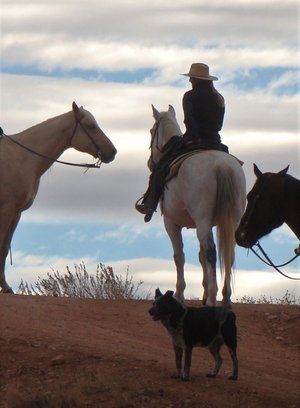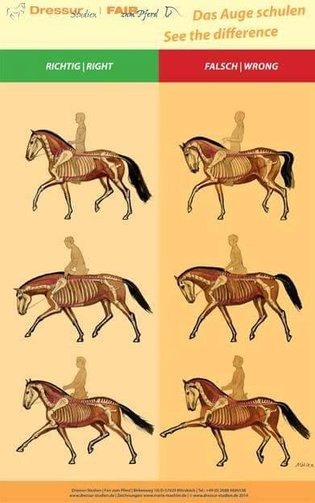HÄSTBEMANNINGEN
Horse Care Services
PROFESSIONAL HORSE CARE SERVICES
Do you need help with understanding your horse better?
Maybe you sense a lack of confidence and contact between you and your horse?
My basic principles are:
Guide your horse in a way understandable for the horse.
A relaxed and positive horse is receptive for education.
Understand your horse from a "horseperspective"
Working with horses is not just a job it is a lifestyle. And for every horse you encounter you learn more about yourself.
BACKGROUND
Over the years I have come into contact with many different types of horses but i started my carrier as a 16 yearold at the racetrack and ended up working with thouroughbreads for more than two decades, as a work rider, jockey and assistant trainer.
Apart from this, I have also ridden Western- and dressage horses as well as showjumpers, ranchhorses and mustangs.
I assisted horseman Patrick Allori in his clinics in equitation and horse-handling based on the teachings of the native american horsepeople for a couple of years traveling throughout Europe.
I began to understand horse behaviour and how to read their body language during the many years I was starting colts (young horses), riding between 4-8 horses a day, basically 7 days a week.
From Patrick I learnt how to look at the horse as many of his people, the Native Americans do and to understand "the horse code language", which opened up a new world for me or, you could say, broadened my world.
When I work with a horse I prefer to begin the training by establishing a good contact with it in freedomwork in the roundpen.
The freedom work means that I introduce myself to the horse in the horse`s language. I don’t ask the horse to understand ME in my language, which is namely what we often do. We impose all our techniques and methods on the horse right from the start and "force" obedience through desensitization and incessant repetition. While doing that we are also unaware of the silent language we are speaking, that means our bodyposition and the energy we are sending out. This though is what the horse is receptive for and reacts to every second of our interaction.
After establishing a safe leadership (based on guidance, not dominance and force) and a clear communication through this contact on the ground, the technical part follows.
Here the goal is for the horse to work biomechanically correctly, to be relaxed and supple, as well as receptive to the rider's aids and signals.
I am also careful to check the horse's movements and if I see that it needs help (in cases of obvious lameness the vet must be contacted) I can carry out a special form of stretching and body balance, to make the horse more aware of its body and to release tension.
This, combined with work to make the horse more supple, both from the ground and on horseback, usually gives the horse a much better starting point for overcoming both physical and mental problems.
A relaxed mouth, a gentle responsiveness to the rider's aids, makes a horse willing and positive to work.
The foundation has been laid and if you have a good basis to work from the rest usually comes easily, provided you are attentive to your horse’s signals and understand both its capabilities and its limitations, taking into account breeding, anatomy, etc.
Protection of the last wild horses
I am devoted to contribute to the worlds last remaining wild horses and my focus is on the mustangs that are still roaming free in North America, threatend by the exploition of their land. More info will follow on this.
During this fall 2018 i was part of a crew of native american filmmakers starting to film a documentary on the wild horse situation in the reservations.
The Basis of good Horse-handling and Riding
I think it is our obligation to learn the HORSE’S LANGUAGE when we deny them their natural life in the wild and want to use them for sport and our own pleasure.
We must understand the horse’s NEEDS and their genetic coding.
Not just force our training and all our methodology on them.
First we must have an understanding of the horse as a biological being and of its life in the wild so that we don’t make too many mistakes right from the start.
We must be a GUIDE, not a dominant ruler, but at the same time we must give the horse a sense of security, not just love without any underlying knowledge at all. How many horses suffer from owners who only have love to offer but who haven’t got a clue about what the horse needs to be content?!
Empathy is a very good word, because if you feel true empathy for other living creatures, then you also LEARN about them when you decide to take on the responsibility for them, so that you can take the best possible care of them.
Owning a horse is a big responsibility. They are completely dependent on us.
When we have established a good contact so that we have a relaxed and attentive horse prepared to co-operate with us, then the aim is to be able to get the horse to work in a biomechanically correct way for optimal soundness and to be able to carry their rider in the best way possible.
Often a far too high degree of collection is demanded of far too young horses which stresses them and breaks them down even before their career has started.
Even older, fully-developed horses must be allowed to ALTERNATE between suppling exercises, where they can stretch out their necks and backs and work relaxed on a long rein, with work in collection.
Riding a horse behind the vertical is always unacceptable. It is just as bad for a horse to be behind the bit and curling up as when it takes hold of the bit and rushes along with its head held high. A rounded neck is not the same thing as collection.
I find that many problems between rider and horse are related to the bit and that the horse does not have full confidence in the rider.
If the horse has a stressed mouth, this always spreads throughout the body and soon you’ll have both muscular and communication problems.
Horses are peaceful creatures and don’t like conflicts.
Sometimes though misunderstandings arise.
Some horses withdraw into themselves and become introvert, these horses are often considered lazy and ’behind the legs’.
Or they become explosive and extrovert. They rear up, buck, pull on the reins, shy, etc.
It can often be that they quite simply don’t understand their rider properly, or that they have a stressful environment, too little time in the field or a combination of everything.
Furthermore, all horses of course have completely different personalities and should be treated accordingly. I believe that the rider must adapt himself to the horse and not the other way round. It is we who are asking for co-operation and communication, not the horse.
The horse is perfectly happy to just roam freely in a herd and eat grass.
So adaptability is essential. Adjust your energy to each individual, study the horse and feel..


